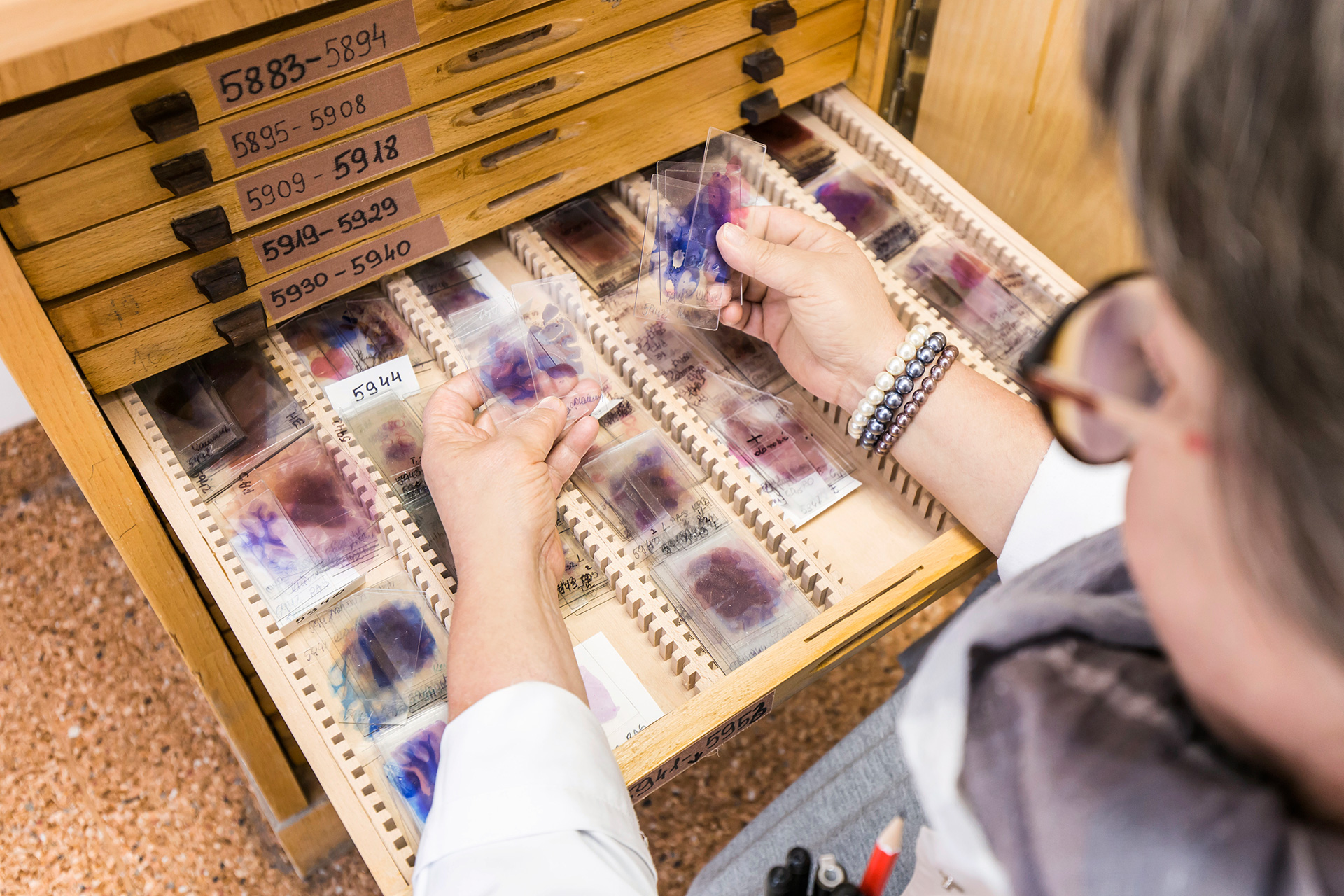About us
What is the Digital Brain Project?
“Digital Brain” is a project consisting in digitalization of resources of the Institute of
Psychiatry and Neurology collected for over half a century. In order to meet the needs of the community of scientists and medical professionals, the Digital Brain Project was launched in co-operation with the Digital Poland Project Centre and the Ministry of Digitalization. Using the state-of-the-art technological and IT solutions, we have created a tool that offers unrestricted access to the Digital Brain resources from any global location. The project is co-funded by the European Union; its value amounts to 7,374,959.91 PLN, of which 6,241,428.57 PLN are EU funds. The remaining 1,133,531.34 PLN comes from the state budget. The main objective pursued by the project authors was to set up a digital database of the collected archival material of the Department of Neuropathology of the Institute of Psychiatry and Neurology. That form of knowledge popularization will give both specialists and interested members of the general public easy access to scientific and teaching materials.

The resources of the Institute of Psychiatry and Neurology include a vast, unique collection of brains from the Department of Neuropathology, containing material that has been gathered since 1952 until the present day by subsequent generations of neuropathologists. The archiving was initiated by the eminent Polish neuropathologist, Professor Ewa Osetowska.
The collection comprises a set of brain fragments fixed in buffered formalin solution, paraffin blocks, histological and immunohistochemical specimens and neuropathological protocols for several dozen disease entities. A brain intended for neuropathological diagnostics is placed in buffered formalin solution in order to be fixed. The dissection of the brain thus fixed is carried out with the use of the Spielmeyer method. A neuropathological examination protocol is drawn up during the brain dissection together with a list of collected specimens. Clinical and pathological data are appended to the protocol. The collected brain tissues are immersed in paraffin. The specimens, sectioned into slices 5-8 m in thickness, are stained with the use of histological and immunohistochemical methods involving antibodies. After the performance of microscopic diagnosis, brain fragments, blocks, specimens and neuropathological examination protocols are archived. Thus, a unique collection has been created, offering ready material for further studies. Its uniqueness mainly rests in the enormous number of recorded cases with accompanying medical documentation and the presence of many rare diseases.
„Digital Brain – digitalized resources of the Institute of Psychiatry and Neurology in Warsaw” is a project carried out within the framework of the Digital Poland Operational Programme for the years 2014-2020, Priority Axis 2 „E-government and open government” Measure 2.3 „Digital availability and usefulness of public sector information”, Sub-measure 2.3.1 „Digital availability of public sector information from administrative and scientific sources” (project type: digital availability of scientific resources)”. Contract no. POPC.02.03.01-00-0042/18-00.
What are the advantages of setting up the digital platform?
Once made available, those scientific resources will become valuable material for doctors analysing medical cases, students wishing to expand their knowledge, as well as scientists looking for pathogenetic factors and conducting research on new biomarkers and therapies for particular
diseases.
For the scientific and medical centres, Digital Brain means better access to the scientific and educational base. Finally, the Institute itself will benefit from the project by strengthening its position as an institution specializing in the development of new treatment methods and from increasing the general awareness about the studied diseases in the scientific and medical circles.
To whom is the project addressed?
The intended beneficiaries of the Digital Brain platform are physicians, scientists representing various specialty fields, psychologists, students, science journalists, and all those who are interested in neuroscience. The project’s target group also includes higher education institutions, scientific bodies, medical centres, businesses developing innovative medical technologies, NGOs dealing with health protection, students, science journalists and science popularisers representing various
scientific fields.


About the Institute
The Institute of Psychiatry and Neurology was founded in 1951 on the initiative of a group of psychiatrists and neurobiologists including Jerzy Konorski, an outstanding Polish neurophysiologist. Currently, the Institute is Poland’s leading scientific centre specializing in the development of new methods for the treatment and rehabilitation of mental and neurological disturbances. The availability of a vast clinical and diagnostic base allows the Institute specialists to diagnose and treat neurological and mental diseases. Patients receive both hospital and outpatient treatment. The Institute is also active in the field of postgraduate education, offering doctoral studies and specialization studies for physicians and psychologists. We undertake activities aimed at health promotion and health education directed to patients and their families, the general public, and institutions.
The priority tasks of the Institute include:
- conducting scientific research and R&D works on the nervous system dysfunctions;
- offering medical services in the field of neurology, neurosurgery, psychiatry and related sciences;
- training and educational activity;
- translating the results of scientific research and R&D works into practical solutions.
Currently, the Institute is co-operating with over fifty foreign scientific centres, including scientific units based in London, Michigan, Los Angeles, and Munich. We are willing to enter into co-operation with scientific research units, social partners and commercial entities, offering highly specialised staff, diagnostic labs, and therapeutic centres. Having at its disposal a large clinical base, the Institute is ready to co-operate in various partnership models and set up research and development consortia.
